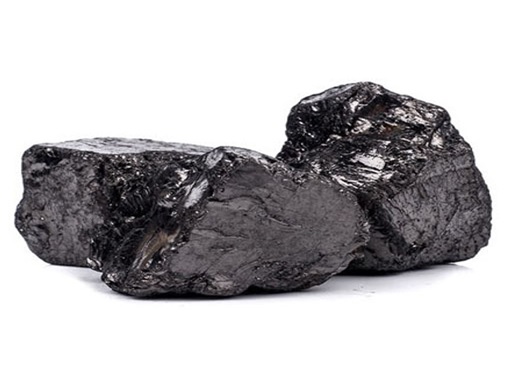One of the minerals that has the highest percentage of carbon is anthracite. This mineral has a very high degree of hardness and it is somehow placed in the coal group. Anthracite is used as a type of supplement in water purification filters. The reason for this is the easy passage of untreated water through these filters, which of course, in this process, anthracite also removes all the impurities and suspended particles in the water. Some of the features and characteristics of anthracite include: the possibility of higher and better service compared to single-layer filters, no need to wash the filter frequently, increasing the life of filters and increasing the flow rate of incoming water for purification.
Anthracite coal is one of the darkest and most shiny hard coals, and having a lot of carbon, it has a blue flame when ignited and is completely smokeless. Anthracite is a type of dry coal that exists in mountainous areas, and this coal has different uses in addition to heat production and is available in different types.
In the past, this product has been used for heating, but due to the limitation in providing this product, its use for this purpose has decreased. In the following, we mention various things about anthracite coal.
Properties of anthracite coal
• Anthracite coal has a high stability due to its compactness and proper dispersion level, having a hard and solid structure.
• Anthracite coal has a very high amount of carbon, which is used as an effective fuel and energy source for heating buildings due to this feature.
• Anthracite coal has a low level of environmental pollutants such as sulfur; Therefore, compared to other types of coal, anthracite is known as an environmentally friendly fuel.
Types of anthracite coal
• Anthracite coal is generally divided into three main categories:
• High quality anthracite: this type of anthracite has a very high carbon content and less pollutants than other types of anthracite.
• Semi-compressed anthracite: Semi-compressed anthracite has a lower carbon content than upper anthracite and has more pollutants. This type of anthracite is also used as a fuel with acceptable carbon content for heating buildings and generating electricity.
• Semi-hard anthracite: This type of anthracite has a lower carbon content than semi-compressed anthracite, which is mostly used as a mineral in industrial products.
Tips for buying anthracite coal
When buying anthracite coal, pay attention to the following:
• Make sure that the anthracite coal you intend to buy is of good quality. Coal quality is usually determined based on carbon content, pollutant production rate, and physical properties.
• Determine the required amount of anthracite coal. This may include domestic consumption for heating or industrial consumption for power generation and industrial processing.
• Check and compare anthracite coal prices. Also, keep in mind the type of application of this product to buy this type of coal based on your needs.
Factors affecting the price of anthracite coal
The price of anthracite coal is influenced by various factors, the most important of which are:
• The quality of anthracite coal is one of the most important factors that play a role in determining the price of this product. How this coal was produced is effective in this field.
• The demand and supply of anthracite coal in the market also affects its price. If the demand for anthracite coal is high and the supply is limited, the price will usually increase.
• Things like particle size, apparent density, moisture level and also the amount of ash used in the composition of this product are effective in its final price.
Application of anthracite coal in industry
Anthracite coal has many applications in various industries, the most important of which include the following:
• Due to the smokeless flame of anthracite coal, it is widely used in heating.
• This product is used as fuel for trains, because it is not an environmental pollutant.
• Anthracite coal is used as a basic material in petrochemicals.
• This product is used in the steel industry to prepare active carbon based on coal.
Among the other uses of anthracite coal, we can mention the use in the production of various types of melting furnaces, the production of iron ore pellets, and the use in water treatment plants.
Method of producing or making anthracite coal
Usually, for the production of anthracite coal, the following steps are followed:
The process of coal formation includes sedimentation and accumulation of organic matter under certain conditions. For this purpose, a situation such as high pressure and moderate temperature during a long time is needed.
Over time and due to the effect of pressure and heat, coal undergoes physical and chemical changes. In these stages, the organic materials in the coal are accumulated and pressure and heat are applied to them, which makes anthracite coal with suitable properties to be formed.
After the formation of anthracite coal in the ground, its extraction phase begins. Coal mining methods include surface and underground mining.
After anthracite coal is mined, processing and preparation steps may be required to improve its quality and properties. These steps include washing, draining, crushing and drying.

